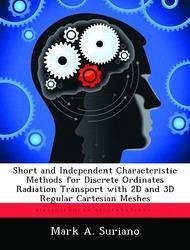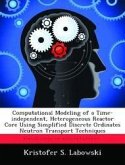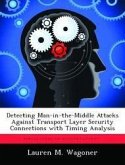Accurate, reliable, and robust discrete neutral particle radiation transport codes are needed in order to perform realistic 3D engineering calculations. Current neutron transport codes use low order spatial quadratures that are inaccurate unless a highly refined spatial mesh is used. In this work various higher order characteristic spatial quadratures are derived, implemented, and tested. Regular meshes of rectangular (2D) and of rectangular parallelepiped (boxoid) cells are supported. Short characteristic (linear characteristic [LC] and exponential characteristic [EC]) methods are compared with the corresponding independent characteristic (ILC and IEC) methods. The latter readily provide for plane-parallel implementation. All transport results were benchmarked against Monte Carlo calculations. The diamond difference (DD) method was also tested and compared to the characteristic spatial quadratures. IEC and EC were found to be robust, reliable, and accurate for thin, intermediate, and optically thick cells. LC was robust, reliable, and accurate for cells of thin to intermediate (approximately 2 mean free paths) optical thickness. ILC was not pursued in 3D due to its anticipated excessive computational cost. DD was unreliable (as expected) over the range of test problems. We conclude that IEC and EC are apt methods for a wide range of problems, and provide the ability to perform realistic engineering calculations on coarse cells given nonnegative group-to-group, ordinate-to-ordinate cross section data.
Bitte wählen Sie Ihr Anliegen aus.
Rechnungen
Retourenschein anfordern
Bestellstatus
Storno









